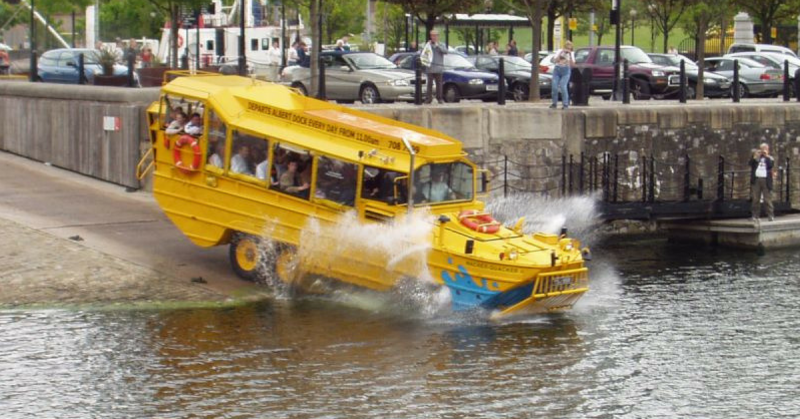For most consumers, the notion of a boat and truck amphibious hybrid vehicle doesn’t make sense. They don’t need a vehicle that can lead them across the water, and also across the land. However for aspiring entrepreneur Melvin Flath, the moment he saw the DUKW at a postwar surplus sale, he knew he had to have it.
Tipping the scales at 2.5 tons, this military cargo hauler was sealed tight to move both troops and supplies to the shore during the second world war. Soldiers in Normandy, Italy, and the Pacific had christened these amphibious craft as “Ducks.”
For Flath, this was the craft that would carry sightseers and tourists along the Wisconsin River, taking in the twisting waterways and sandstone formations. Owned by Flath’s business partner, Robert Unger, the first vehicle lumbered through Wisconsin’s Dells region in 1946.
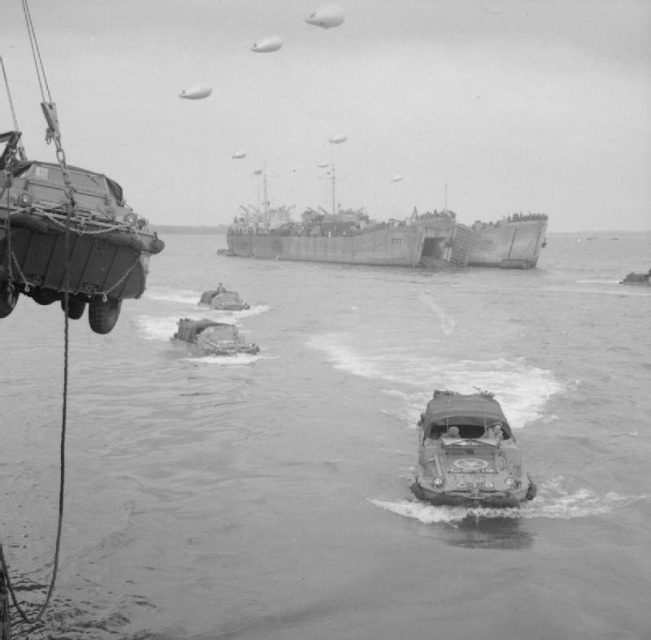
The Original Wisconsin Ducks now have 92 authentic, but modernized crafts presently in use, according to general manager Dan Gavinski. The business model arrived in Branson, Missouri some forty years ago, and continued to grow. Unfortunately, according to the Washington Post, in July of 2018, a replica of one of the vehicles sunk in Table Rock Lake, causing the deaths of seventeen people, including a one year old and a family of nine.
A success story showcasing military ingenuity, and a craft somehow survived a skeptical bureaucracy to participate in Allied invasions only to evolve into a tourism vehicle, the history of the DUKW spans seven decades. Manufactured by General Motors starting in 1942, the acronym DUKW stands for Designed in 1942, for Utility, K for all wheel drive, W for dual tandem rear driving axles.
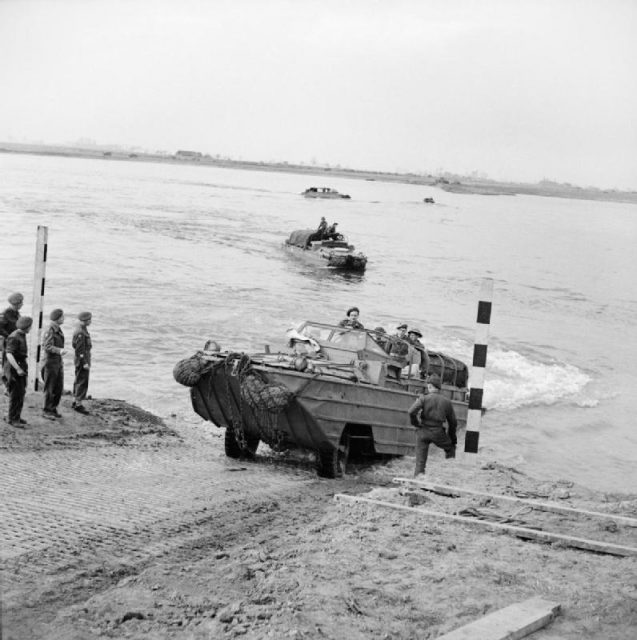
The craft produced a partial solution to the ancient problem of amphibious warfare, and precisely how to transport troops, ammunition, and supplies from ship to shore. Other boats, such as the Higgins landing craft, could merely approach the beach but were insufficient for the transportation of heavy equipment. The DUKW’s, however, could carry up to 5,000 pounds of equipment and up to twenty five troops at one time.
War planners displayed little interest in the DUKW during its design phase, and even before a planned demonstration of the craft’s abilities off the coast of Cape Cod in December of 1942. This opinion lasted until a massive, nearly hurricane level storm hit, smashing a Coast Guard vessel against a sandbar.
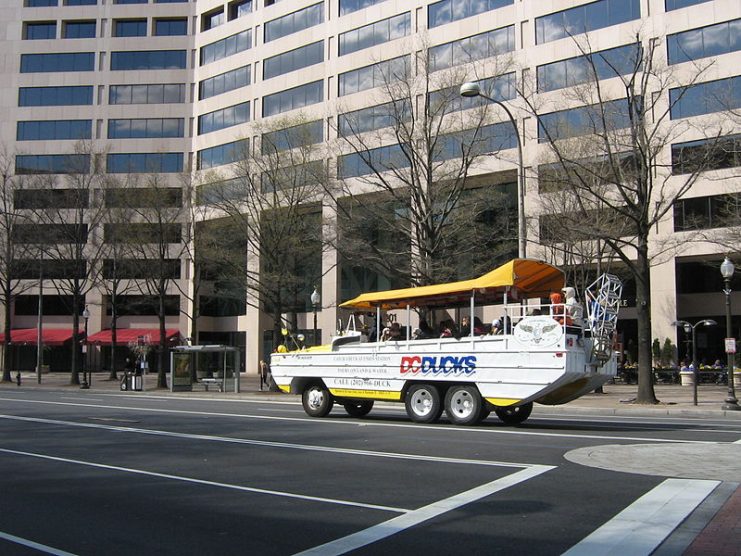
The ship was unreachable due to the intense ferocity of the waves. That’s when Roderick Stephens, one of the designers of the DUKW, took the opportunity to approach the vessel, first covering the distance from the land before entering the water to save the lives of seven Coast Guardsmen from the battered ship before it could break apart. The war planners took note of the utility of the craft after that.
It gained an even stronger endorsement when General George S. Patton used 1,000 DUKW’s for a resupply mission related to the invasion of Sicily in July of 1943. The DUKW developed an ability to transition from water to land and back through deflation of its tires, which allowed drivers to overcome the terrain that had so vexed U.S war planners.
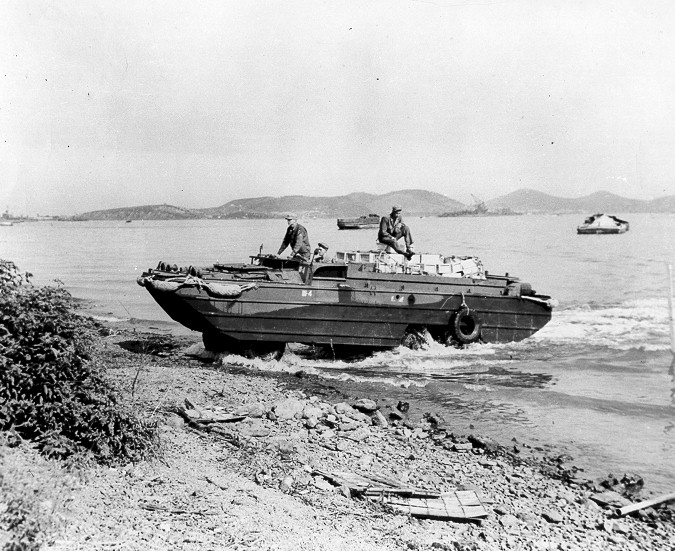
In future trials in Normandy and Sicily, the DUKW would experience some setbacks. Originally summoned upon ahead of the Normandy Invasion of June 1944, they were intended to ferry across eighteen million tons of supplies to the shores within the first ninety days.
However, the vehicles were unseaworthy while carrying heavy loads. Several DUKWs sank after unloading, either sunk by enemy fire or large waves. The drawbacks in Sicily included getting mired in mud and difficulty in unloading.
Their cruising speed on land was 45 mph, but could only manage 5mph in the water. Despite these setbacks, the vehicles were mainly regarded to be a boon in both the European and the Pacific theaters.
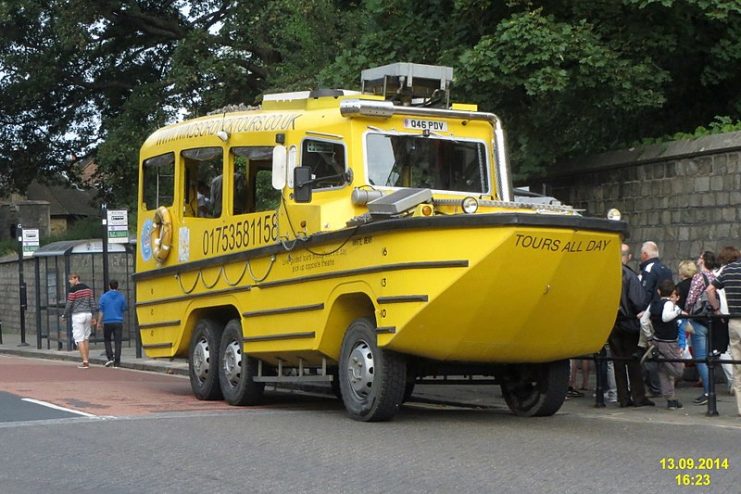
The end of the Second World War brought an uncertain future for the DUKW. Some continued to see service in the Korean War while others were purchased by police and fire departments, especially for water rescue work. Still others, like those used today by Gavinski, saw a second life as sightseeing vehicles.
Read another article from us – Masters of Armored Warfare: 6 Historic German Tanks
It’s as yet unclear just how the incident in Branson could affect the Duck boat industry. The unfortunate events aren’t the first time for the Ducks. According to the Associated Press, more than 40 people have perished in Duck related incidents since 1999.
